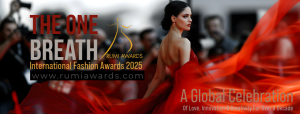Luxurious Velvet
Luxurious Velvet: A Timeless Fabric of Elegance and Opulence
Velvet, a fabric synonymous with luxury and sophistication, has been a staple in fashion and interior design for centuries. Its rich texture and vibrant colors have made it a favorite among royalty and fashion enthusiasts alike. This article delves into the history, characteristics, and modern applications of velvet, highlighting why it remains a symbol of opulence.
The Rich History of Velvet
Velvet’s origins can be traced back to ancient Egypt, where it was initially woven from silk. The fabric gained prominence during the Middle Ages, becoming a symbol of wealth and power. European royalty, particularly during the Renaissance, favored velvet for its lush appearance and tactile appeal.
Historically, velvet was produced using a complex weaving process that involved two layers of fabric. This intricate method made it expensive and exclusive to the upper echelons of society. Over time, technological advancements have made velvet more accessible, yet it retains its luxurious reputation.
Characteristics of Velvet
Velvet is distinguished by its soft, dense pile, which gives it a unique sheen and depth. The fabric is typically made from silk, cotton, or synthetic fibers, each offering different qualities:
- Silk Velvet: Known for its unparalleled softness and luster, silk velvet is the most luxurious and expensive type.
- Cotton Velvet: Offers a more matte finish and is often used in upholstery and casual wear.
- Synthetic Velvet: Made from polyester or nylon, it is more affordable and durable, making it suitable for a variety of applications.
The versatility of velvet extends to its color palette, with the fabric’s ability to hold dye resulting in vibrant, rich hues that enhance its opulent appearance.
Modern Applications of Velvet
In contemporary fashion, velvet is celebrated for its ability to add a touch of elegance to any ensemble. Designers frequently incorporate velvet into evening wear, accessories, and even casual attire, showcasing its adaptability.
In interior design, velvet is a popular choice for upholstery, drapery, and decorative accents. Its ability to add warmth and texture to a space makes it a favorite among designers seeking to create luxurious environments.
Case Studies: Velvet in Fashion and Design
Several high-profile fashion events have highlighted velvet’s enduring appeal. For instance, velvet gowns have graced the red carpets of prestigious award ceremonies, worn by celebrities who appreciate the fabric’s timeless elegance.
In interior design, velvet has been used in iconic spaces, such as luxury hotels and historic homes, where its rich texture complements both traditional and modern aesthetics.
The Future of Velvet
As sustainability becomes increasingly important in fashion and design, velvet is evolving to meet these demands. Innovations in fabric production are leading to more eco-friendly options, such as organic cotton velvet and recycled synthetic fibers.
Moreover, the rise of digital printing technology allows for more intricate and personalized designs on velvet, expanding its creative possibilities.
Conclusion: The Timeless Allure of Velvet
Velvet’s luxurious appeal is rooted in its rich history, unique characteristics, and versatile applications. Whether in fashion or interior design, velvet continues to captivate with its elegance and opulence. As the industry moves towards sustainability, velvet’s adaptability ensures it will remain a cherished fabric for generations to come.
In summary, velvet is more than just a fabric; it is a symbol of luxury and sophistication that transcends time. Its ability to evolve while maintaining its core attributes makes it a timeless choice for those seeking to add a touch of elegance to their lives.






